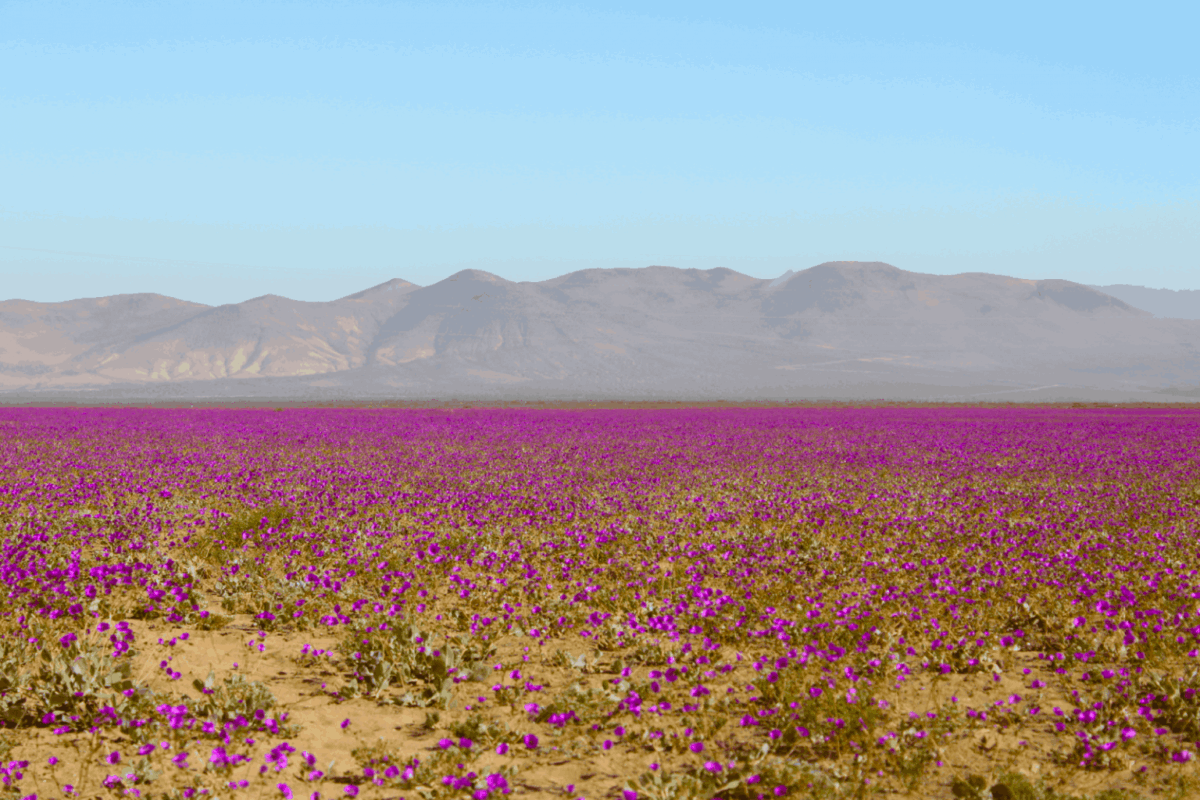The Atacama Desert is a stunning display of nature’s strength, transforming vast expanses of barren sand into a beautiful tapestry of fuchsia, pink, and purple wildflowers.
This year’s Desierto Florido, triggered by unprecedented winter rains, produced one of the most spectacular explosions of flowers in decades, captivating scientists and conservationists. Known as the world’s driest non-polar region, the Atacama Desert receives up to 60 millimeters of rainfall in high-elevation areas during July and August, well above the annual average of just 2 millimeters, awakening dormant seeds long buried in parched soil.
This phenomenon can be seen from space and extends over hundreds of square kilometers, centered in Llanos de Chare National Park, from Totral to Caleta Chañarar de Acetuno. More than 200 unique plant species have sprouted, including the star of the show, Cistante longiscapa, also known as “pata de guanaco.” Its bright flowers dominate the landscape. “These flowers store energy in underground bulbs and emerge only when conditions are right, revealing a remarkable adaptation to extreme aridity,” explains Victor Ardiles, chief curator of botany at Chile’s National Museum of Natural History. The temporary phenomenon is currently expected to peak in mid-October, but subside by November as temperatures warm and moisture evaporates.
The Atacama Desert is home to amazing flowers: The secrets beneath the Atacama Desert
Scientists are rushing to uncover the ecological secrets of this Atacama Desert flower. A 2019 study published in the ISME journal revealed how rare rainfall events like those in 2025 can trigger rapid microbial changes in salt layers in the Atacama Desert, resulting in biodiversity within 48 hours and promoting plant germination. Similarly, a 2022 analysis published in Frontiers in Ecology and Evolution highlights the mysteries of the evolution of pollination over such short time periods, stating that little is known about how plants synchronize with pollinators in such harsh environments. “Blooming in the Atacama Desert provides a natural laboratory to study resilience under climate change,” says Francisco Scuo, an ecologist at the University of La Serena.
Credit: Cesar Gonzalez Palomo
Sleeping Beauty Awakens: Atacama Desert Flowers Become a Tourism Phenomenon
Atacama’s tourism numbers are growing at an impressive rate, with more than 50,000 tourists flocking to the 570 square kilometer Desert Bloom National Park, established in 2023 to protect vulnerable fields. Guided tours along Route 5 emphasize Leave No Trace principles to prevent trampling, as one wrong move can destroy years of seed banks. Copiapo’s local economy benefits from ecotourism, but authorities are encouraging sustainable practices amid increasing pressure from mining and agriculture.
As the petals begin to wither, the Atacama Desert returns to silence, but its bloom in 2025 is a reminder of the vitality hidden in the world’s driest region. For now, color continues as a fleeting gift from an unforgiving land.








